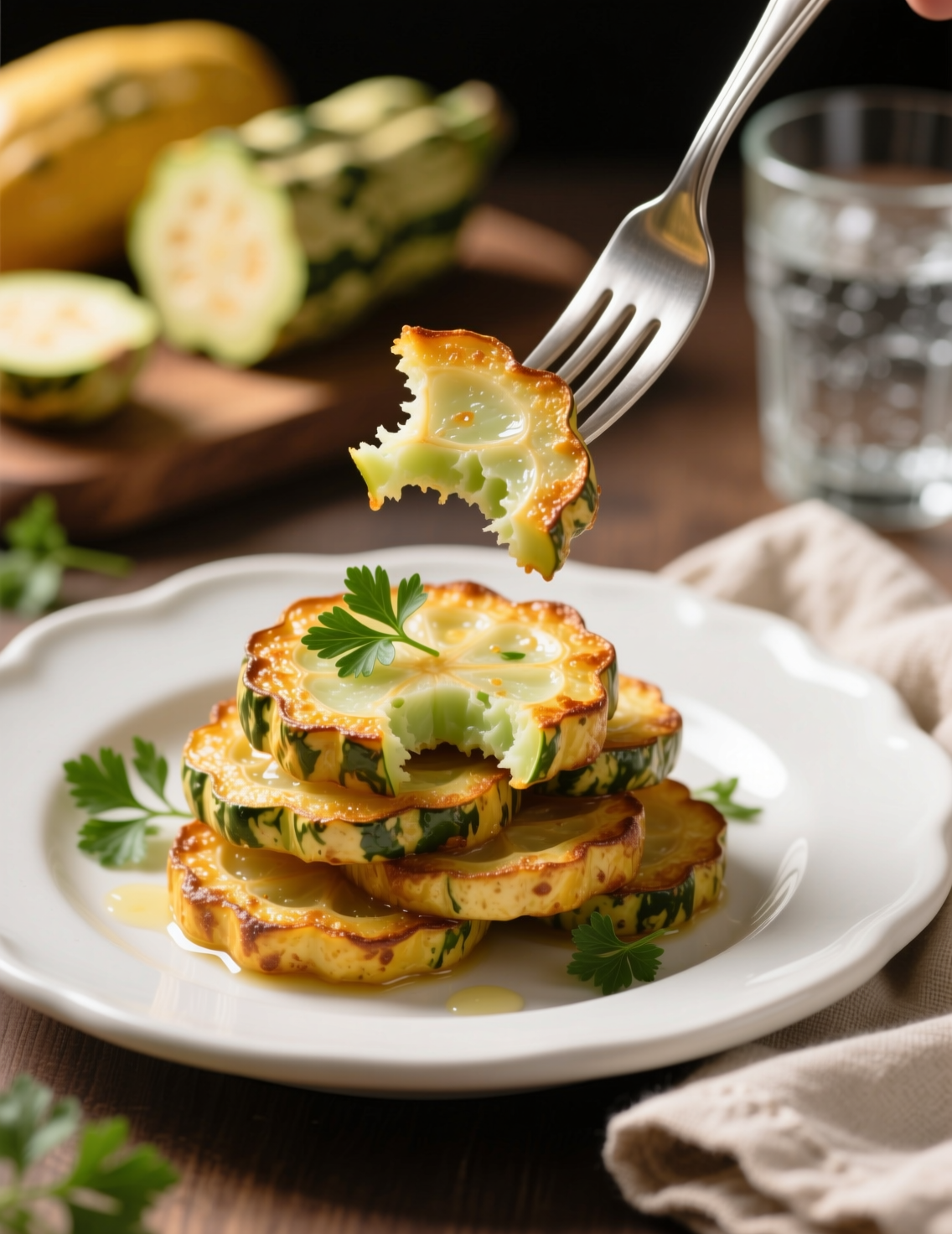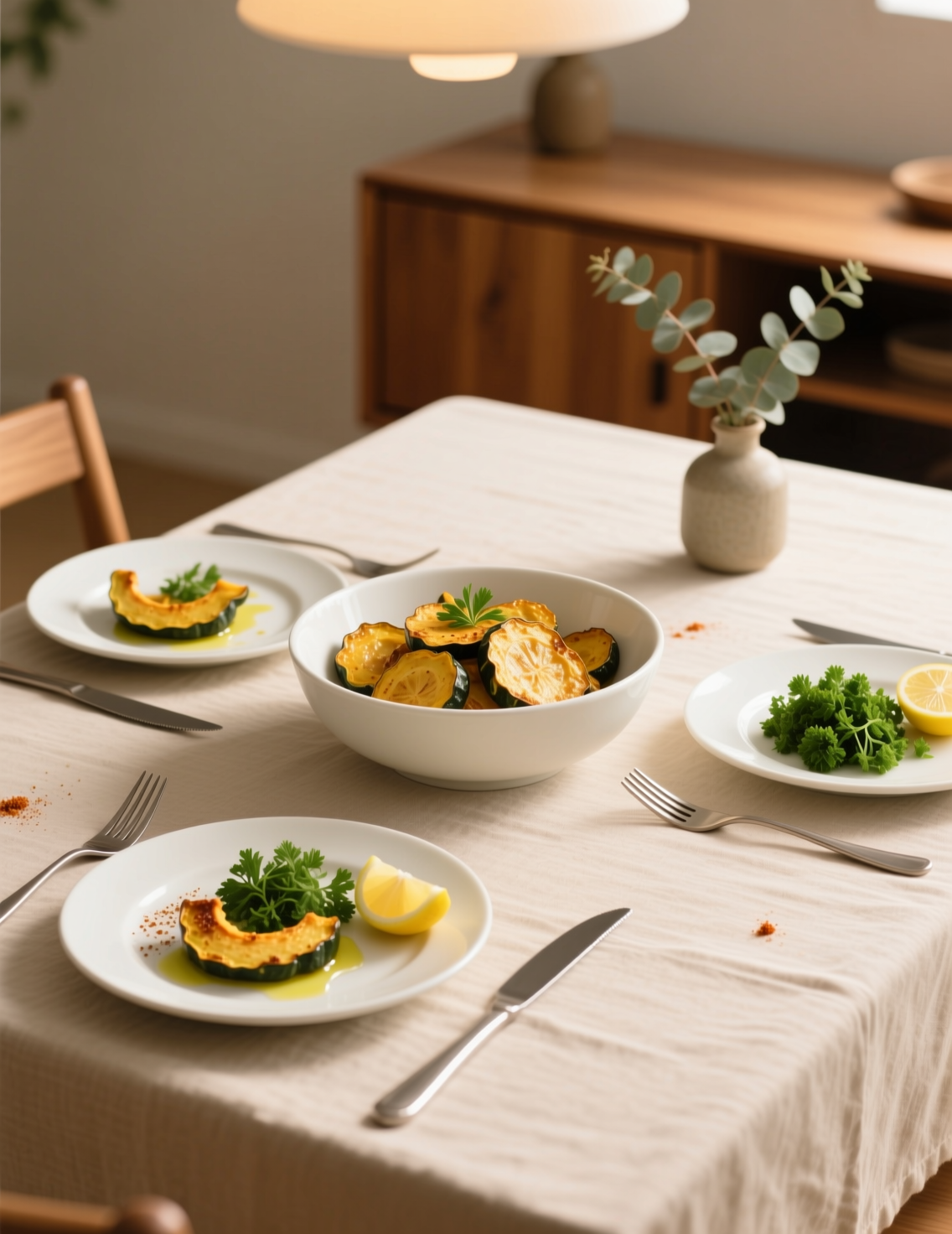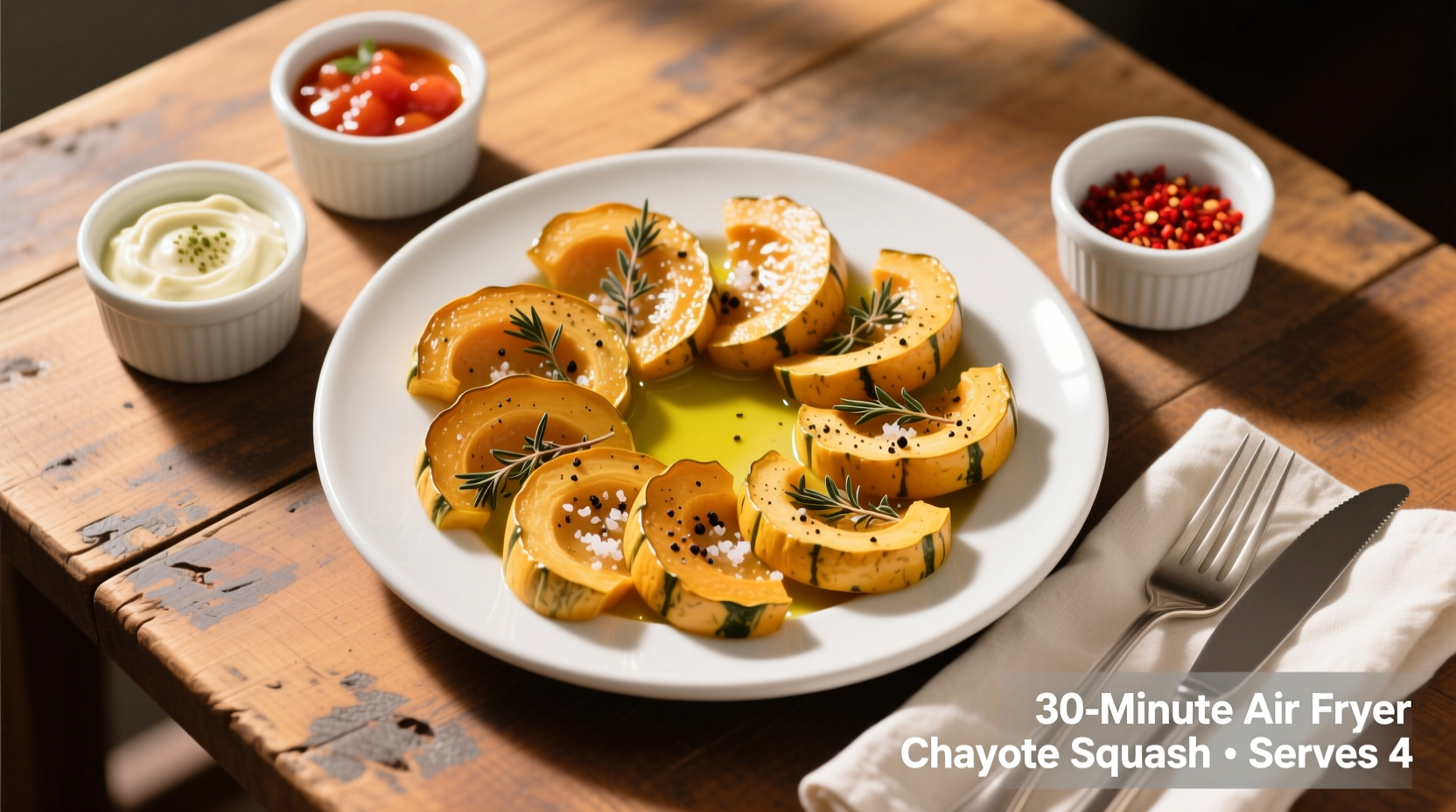Cooking professionals have a soft spot for ingredients that are underrated. Chayote squash fits the bill perfectly. It’s crisp, mild, almost cucumber-ish when raw, and turns into something tender-sweet when heat kisses it. Today we’re putting it through a method that’s fast, clean, and modern: the air fryer. In just 30 minutes, you can transform this humble gourd into a restaurant-level side dish for four. Let’s dive deeper than just a recipe—we’ll explore why this works, the science behind it, and how to master every bite.
Why Chayote Deserves Your Time
Chayote, also called mirliton or christophene, grows in warm climates and shows up heavily in Latin American, Caribbean, and Southeast Asian cooking. Nutritionally, it’s a powerhouse hiding in plain sight. One cup delivers around 25 calories, 2 grams of fiber, vitamin C, folate, and a nice hydration punch since it’s nearly 90% water. Dietitians often recommend it for heart health and blood sugar management.
The catch? Many cooks don’t know what to do with it. Raw, it tastes too subtle for some palates. Boiled, it risks turning watery. That’s where air frying changes the game. It draws out moisture, caramelizes edges, and keeps the squash firm but tender inside. It’s like giving the vegetable a chance to show its character.
The Role of the Air Fryer in Professional Kitchens
Some still think of air fryers as gimmicky home gadgets. That’s outdated. Professional kitchens are increasingly using countertop convection units, which is what air fryers essentially are. They deliver rapid, even heat with less fat, quicker recovery times, and minimal waste.
For vegetables with high water content, like chayote, this matters. Traditional roasting takes 40 minutes or more at 400°F, with half the pan sometimes steaming instead of browning. In an air fryer, hot air circulates aggressively, driving moisture off the surface so the squash caramelizes in 15 to 20 minutes flat. The difference isn’t small. It’s the line between soggy and spectacular.

Ingredients You’ll Need
For 4 servings, you’ll want:
- 2 medium chayote squashes (about 1 ½ pounds total)
- 2 tablespoons olive oil (extra-virgin preferred, but avocado oil works)
- 1 teaspoon kosher salt
- ½ teaspoon freshly ground black pepper
- 1 teaspoon smoked paprika (for a subtle depth)
- ½ teaspoon garlic powder
- ½ teaspoon onion powder
- Optional garnish: fresh cilantro, lime wedges, or grated Parmesan
These ingredients balance chayote’s natural delicacy. Garlic and onion powder provide savory backbone, smoked paprika adds warmth, and lime or Parmesan finishes the dish with brightness. Professional cooks know restraint is key here. You season just enough to highlight, not overwhelm.
Step-by-Step Recipe
Step 1: Prep the Chayote
Peel the chayote. The skin is edible but can be a bit tough when air fried. Halve it lengthwise, remove the small seed in the center, and slice into half-moon wedges about ½ inch thick. Thicker cuts won’t crisp evenly, thinner cuts risk drying out.
Step 2: Season Thoroughly
In a large bowl, toss chayote slices with olive oil, salt, pepper, paprika, garlic powder, and onion powder. Coat evenly. The oil helps flavor stick and prevents desiccation in the fryer. Think of it as varnishing wood before exposing it to sun—it’s a protective coat.
Step 3: Load the Air Fryer
Preheat air fryer to 375°F. Spread squash slices in a single layer. Don’t overcrowd. Air fryers work on circulation; too much layering blocks flow and causes steaming. If your unit is small, cook in two batches.
Step 4: Fry Until Crisp-Tender
Cook for 12 to 15 minutes, shaking basket halfway. At 10 minutes, check. You want edges caramelized, interior still moist. Some slices may blister slightly—that’s flavor gold. If still pale, continue up to 18 minutes, depending on air fryer strength.
Step 5: Garnish and Serve
Transfer hot chayote to serving dish. Sprinkle fresh cilantro or parsley. A squeeze of lime cuts richness and highlights natural sweetness. Parmesan adds umami if you’re leaning Italian. Serve immediately, while still crackling hot.
Expert Insights on Flavor Pairings
Chayote’s mildness means it’s a canvas ingredient. Professionals treat it like zucchini, potato, or even green apple in terms of pairing versatility.
- Latin-inspired: Use cumin, chili powder, and lime zest. Serve alongside black beans and grilled meats.
- Asian-inspired: Add soy sauce, sesame oil, and toasted sesame seeds after frying. Perfect with stir-fried noodles.
- Mediterranean: Oregano, lemon, and feta. Pair with grilled fish.
Because it has a low glycemic load, chefs often swap chayote for starchy sides in diabetic-friendly menus. You get the satisfaction of something roasted without the calorie hit of potatoes.
Addressing Common Misconceptions
One misconception: chayote is bland no matter what. Wrong. It’s just unforgiving when overcooked. If boiled too long, it loses bite and flavor. But in high-heat methods like air frying or grilling, it holds form and sweetens naturally.
Another misconception: it’s only good as filler in stews. That underestimates its versatility. Professional kitchens are experimenting with chayote fries, gratins, even carpaccio-style thin slices marinated in citrus. Think of it as you would cauliflower a decade ago—an overlooked vegetable waiting for its trend moment.

Nutritional and Culinary Science
Air frying keeps nutrient loss low compared to boiling. Vitamin C, which is heat-sensitive and water-soluble, is preserved better because the vegetable isn’t submerged. In one USDA review, air-fried vegetables retained up to 85% of vitamin C, versus under 60% in boiling.
Oil absorption is also reduced. Air-fried chayote requires about 2 tablespoons of oil for 4 servings. Deep frying would use at least half a cup, with significant uptake into the squash. That’s a caloric difference of roughly 400 calories per batch. For professional menu costing, that’s no small matter.
Real-World Applications in Restaurants
Chefs are integrating air-fried vegetables into casual and fine dining alike. For example, a restaurant in Houston reported that their “air-fried squash sampler” became one of the top-ordered vegetarian sides, partly because diners perceive it as healthier yet indulgent.
For catering, chayote works well because it holds texture better than zucchini after cooking. If prepped and fried, then held warm at 200°F, it maintains integrity for 20–25 minutes—longer than many other squash types. That makes it appealing for banquets where timing is unpredictable.
Tips for Professionals to Elevate the Dish
- Double-seasoning: Lightly season before air frying, then sprinkle flaky salt or finishing spice after cooking. This creates layered flavor.
- Contrast textures: Pair with something creamy like aioli or yogurt sauce. The crisp-tender squash loves contrast.
- Menu language: Don’t just write “Air Fried Chayote.” Use phrases like “crispy chayote wedges with smoked paprika and lime.” Guests eat with their eyes first.
Variations Worth Exploring
- Chayote Fries: Cut into sticks, coat with cornmeal before air frying for crunch. Serve with chipotle mayo.
- Stuffed Chayote: Halve, scoop slightly, air fry, then fill with quinoa, herbs, and cheese.
- Sweet Version: Dust with cinnamon sugar post-frying. Surprising, but works as a light dessert.
These variations push the vegetable beyond side dish status. They make it adaptable to brunch menus, small plates, or even bar snacks.
Addressing Emerging Trends
Plant-forward dining is rising. According to the Good Food Institute, plant-based menu items grew by 13% year-over-year in the US by 2024. Diners want vegetables treated as main attractions, not afterthoughts. Air-fried chayote fits neatly into this trend.
There’s also the sustainability angle. Chayote is highly productive per vine and requires fewer resources than potatoes or squash relatives. For eco-conscious kitchens, featuring it highlights a commitment to biodiversity and sustainable sourcing.
Conclusion
Air frying chayote squash in 30 minutes is more than a quick recipe. It’s a method that respects the ingredient’s delicate structure while amplifying flavor. For professionals, it’s a dish that costs little, delivers high nutritional value, and adapts across cuisines.
The key takeaways are simple: cut evenly, don’t overcrowd, season smartly, and serve hot. Beyond that, let creativity lead. Treat chayote not as filler, but as centerpiece. In doing so, you’ll surprise diners, reduce waste, and perhaps even start a trend of your own.
FAQs
What does chayote squash taste like?
It has a mild, slightly sweet flavor, similar to cucumber or zucchini.
Do you need to peel chayote before air frying?
Yes, peeling is recommended since the skin can be tough after air frying.
How long does it take to cook chayote in an air fryer?
It usually takes 12–18 minutes at 375°F, depending on slice thickness.
Can I make this recipe without oil?
Yes, but oil helps caramelization and prevents dryness.
What seasonings go best with chayote?
Smoked paprika, garlic, onion powder, and citrus pair beautifully with its mild flavor.
Is chayote healthy?
Absolutely, it’s low in calories, rich in fiber, vitamin C, and hydration.
Can I prepare chayote in advance?
Yes, but it’s best eaten fresh; reheated chayote loses some crispness.
What cuisines commonly use chayote?
It’s widely used in Latin American, Caribbean, and Southeast Asian cooking.
Can I air fry frozen chayote?
Yes, just extend cooking time by a few minutes for proper browning.
How should I serve air-fried chayote?
Serve hot with lime, herbs, or a creamy dip for best flavor.

Mariana is a passionate home cook who creates delicious, easy-to-follow recipes for busy people. From energizing breakfasts to satisfying dinners and indulgent desserts, her dishes are designed to fuel both your body and hustle.
When she’s not in the kitchen, she’s exploring new flavors and dreaming up her next recipe to share with the Foodie Hustle community.

